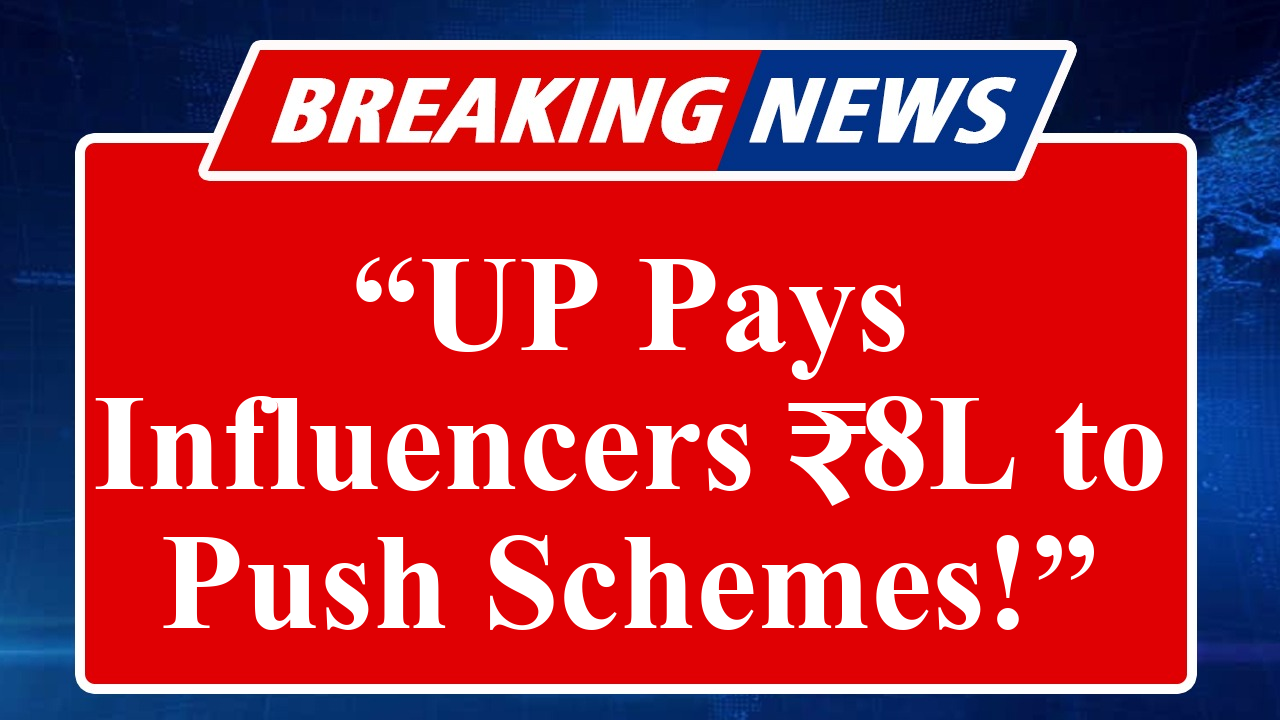Uttar Pradesh’s new Digital Media Policy, 2024, offers influencers up to ₹8 lakh monthly to promote government schemes on platforms like X, Instagram, and YouTube. The policy aims to enhance outreach but has sparked controversy, with opposition parties alleging it stifles free speech. Strict penalties for anti-national or obscene content have also raised concerns about censorship.
Uttar Pradesh’s Influencer Strategy to Amplify Welfare Schemes
The Uttar Pradesh government, under Chief Minister Yogi Adityanath, has rolled out the Uttar Pradesh Digital Media Policy, 2024, a bold move to harness the power of social media influencers to promote its welfare schemes and achievements. Approved by the state cabinet in August 2024, the policy incentivizes influencers with substantial financial rewards, offering monthly payouts of up to ₹8 lakh for YouTubers and ₹5 lakh for those on X, Facebook, and Instagram, depending on their follower count. The initiative aims to ensure that information about developmental and public welfare programs reaches a wider audience through engaging digital content like videos, reels, and posts.
According to a press note by Sanjay Prasad, Principal Secretary of the Information Department, the policy includes categorizing influencers based on their subscribers and followers. For instance, YouTube influencers can earn ₹8 lakh for videos, ₹7 lakh for shorts, and ₹4 lakh for podcasts, while those on other platforms are categorized into four tiers with payments ranging from ₹2 lakh to ₹5 lakh. The government has appointed a digital agency, V-Form, to manage advertisements and ensure content aligns with its objectives. This structured approach is designed to create employment opportunities and amplify the state’s initiatives, such as the Swami Vivekanand Youth Empowerment Scheme, which focuses on providing resources and education to young people.
However, the policy has not been without controversy. Opposition parties, including the Samajwadi Party and Congress, have criticized it as an attempt to curb freedom of expression. Anil Yadav, UP Congress General Secretary, argued that the policy is a ploy to silence independent digital platforms that have exposed government shortcomings over the past five years. Critics like Santosh Singh, who runs the digital platform Times of Swaraj, claim the government is using financial incentives to create a favorable narrative, effectively turning influencers into “cheerleaders” for the ruling Bharatiya Janata Party (BJP). The opposition alleges that public funds are being misused for government publicity rather than genuine welfare.
The policy also introduces stringent measures against content deemed “anti-national, obscene, or objectionable.” Legal actions, including potential life imprisonment, are outlined for influencers or agencies uploading such content. This has raised concerns among digital creators about censorship and the potential misuse of vague terms like “objectionable” to suppress dissent. The BJP, however, defends the policy, with leaders stating it will set a national example by curbing misinformation and ensuring law and order on social media platforms.
The initiative comes at a time when influencer marketing is booming in India, with a projected market size of ₹3,375 crore by 2026, according to an EY report. The state’s move aligns with the growing trend of leveraging influencers’ reach to engage younger and rural audiences, particularly for schemes like Ujjwala and Beti Padhao Beti Bachao, which target specific demographics. Yet, the policy’s dual approach of financial incentives and strict regulations has sparked a debate about balancing outreach with freedom of speech.
Recent arrests of influencers in Uttar Pradesh, such as Mehak and Pari in July 2025 for posting “obscene” content, highlight the government’s proactive stance on regulating social media. The Sambhal police emphasized that such actions are meant to uphold social norms, but critics argue that they signal an overreach of authority. As the policy takes effect, its impact on both influencer behavior and public perception of government schemes remains to be seen.
Disclaimer: This article is based on reports and information available from credible sources, including Hindustan Times, The Times of India, The Hindu, and India Today, as well as posts on X. The information reflects recent developments as of August 2025 and may be subject to change. Readers are advised to verify details through official government announcements.

